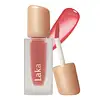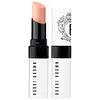What's inside
What's inside
 Key Ingredients
Key Ingredients

 Benefits
Benefits

 Concerns
Concerns

 Ingredients Side-by-side
Ingredients Side-by-side

Water
Skin ConditioningDiisostearyl Malate
EmollientPhytosteryl/Isostearyl/Cetyl/Stearyl/Behenyl Dimer Dilinoleate
Skin ConditioningDimer Dilinoleyl Diisostearate
EmollientPolyglyceryl-10 Nonaisostearate
Skin ConditioningOctyldodecanol
EmollientBis-Diglyceryl Polyacyladipate-2
EmollientHydrogenated Polyisobutene
EmollientCetyl PEG/PPG-10/1 Dimethicone
EmulsifyingPolysorbate 60
EmulsifyingSorbitan Isostearate
Emulsifying1,2-Hexanediol
Skin ConditioningGlycerin
HumectantBehenyl Alcohol
EmollientCitrus Limon Juice
Skin ConditioningRubus Idaeus Juice
AstringentMangifera Indica Juice
Skin ConditioningFragaria Chiloensis Fruit Extract
Skin ConditioningMalt Juice
Skin ConditioningCitrus Aurantium Dulcis Fruit Extract
MaskingPunica Granatum Fruit Juice
MaskingCarica Papaya Fruit Juice
HumectantSodium Acrylates Copolymer
Pentylene Glycol
Skin ConditioningTitanium Dioxide
Cosmetic ColorantButylene Glycol
HumectantPolyacrylate-13
Tromethamine
BufferingAcrylates/C10-30 Alkyl Acrylate Crosspolymer
Emulsion StabilisingEthylhexylglycerin
Skin ConditioningPolyisobutene
Hydroxyethyl Acrylate/Sodium Acryloyldimethyl Taurate Copolymer
Emulsion StabilisingSqualane
EmollientStevioside
MaskingPhytic Acid
Caprylyl Glycol
EmollientDimethicone
EmollientMethyl Hydrogenated Rosinate
PerfumingAluminum Hydroxide
EmollientPolysorbate 20
EmulsifyingTocopherol
AntioxidantParfum
MaskingDehydroacetic Acid
PreservativeCI 19140
Cosmetic ColorantCI 17200
Cosmetic ColorantHc Red No. 1
Blue 1 Lake
Cosmetic ColorantWater, Diisostearyl Malate, Phytosteryl/Isostearyl/Cetyl/Stearyl/Behenyl Dimer Dilinoleate, Dimer Dilinoleyl Diisostearate, Polyglyceryl-10 Nonaisostearate, Octyldodecanol, Bis-Diglyceryl Polyacyladipate-2, Hydrogenated Polyisobutene, Cetyl PEG/PPG-10/1 Dimethicone, Polysorbate 60, Sorbitan Isostearate, 1,2-Hexanediol, Glycerin, Behenyl Alcohol, Citrus Limon Juice, Rubus Idaeus Juice, Mangifera Indica Juice, Fragaria Chiloensis Fruit Extract, Malt Juice, Citrus Aurantium Dulcis Fruit Extract, Punica Granatum Fruit Juice, Carica Papaya Fruit Juice, Sodium Acrylates Copolymer, Pentylene Glycol, Titanium Dioxide, Butylene Glycol, Polyacrylate-13, Tromethamine, Acrylates/C10-30 Alkyl Acrylate Crosspolymer, Ethylhexylglycerin, Polyisobutene, Hydroxyethyl Acrylate/Sodium Acryloyldimethyl Taurate Copolymer, Squalane, Stevioside, Phytic Acid, Caprylyl Glycol, Dimethicone, Methyl Hydrogenated Rosinate, Aluminum Hydroxide, Polysorbate 20, Tocopherol, Parfum, Dehydroacetic Acid, CI 19140, CI 17200, Hc Red No. 1, Blue 1 Lake
Hydrogenated Polyisobutene
EmollientPhytosteryl/Isostearyl/Cetyl/Stearyl/Behenyl Dimer Dilinoleate
Skin ConditioningPolyglyceryl-10 Decaisostearate
EmollientPhytosteryl/Octyldodecyl Lauroyl Glutamate
Skin ConditioningMicrocrystalline Wax
Emulsion StabilisingOctyldodecanol
EmollientPolyethylene
AbrasiveCetearyl Alcohol
EmollientOctyldodecyl Neopentanoate
EmollientCaprylic/Capric Triglyceride
MaskingHydrogenated Olive Oil
Skin ConditioningEthylene/Propylene Copolymer
AbrasiveEthylhexyl Palmitate
EmollientSqualane
EmollientPersea Gratissima Oil
Skin ConditioningSimmondsia Chinensis Seed Oil
EmollientOrbignya Oleifera Seed Oil
EmollientTheobroma Cacao Seed Butter
EmollientButyrospermum Parkii Butter
Skin ConditioningOlea Europaea Oil Unsaponifiables
Skin ConditioningOlea Europaea Fruit Oil
MaskingPalmitoyl Tripeptide-1
Skin ConditioningLactic Acid
BufferingCholesterol
EmollientCeramide Ng
Skin ConditioningTribehenin
EmollientSorbitan Isostearate
EmulsifyingSorbitan Oleate
EmulsifyingParfum
MaskingCitral
PerfumingLinalool
PerfumingLimonene
PerfumingTocopherol
AntioxidantBHT
AntioxidantAscorbyl Palmitate
AntioxidantTocopheryl Acetate
AntioxidantPentaerythrityl Tetra-Di-T-Butyl Hydroxyhydrocinnamate
AntioxidantMica
Cosmetic ColorantCI 77891
Cosmetic ColorantCI 77491
Cosmetic ColorantCI 77492
Cosmetic ColorantCI 77499
Cosmetic ColorantCI 77163
Cosmetic ColorantCI 42090
Cosmetic ColorantCI 77400
Cosmetic ColorantCI 77742
Cosmetic ColorantCI 45370
Cosmetic ColorantCI 15850
Cosmetic ColorantCI 45380
Cosmetic ColorantCI 45410
Cosmetic ColorantCI 73360
Cosmetic ColorantCI 17200
Cosmetic ColorantCI 19140
Cosmetic ColorantCI 15985
Cosmetic ColorantHydrogenated Polyisobutene, Phytosteryl/Isostearyl/Cetyl/Stearyl/Behenyl Dimer Dilinoleate, Polyglyceryl-10 Decaisostearate, Phytosteryl/Octyldodecyl Lauroyl Glutamate, Microcrystalline Wax, Octyldodecanol, Polyethylene, Cetearyl Alcohol, Octyldodecyl Neopentanoate, Caprylic/Capric Triglyceride, Hydrogenated Olive Oil, Ethylene/Propylene Copolymer, Ethylhexyl Palmitate, Squalane, Persea Gratissima Oil, Simmondsia Chinensis Seed Oil, Orbignya Oleifera Seed Oil, Theobroma Cacao Seed Butter, Butyrospermum Parkii Butter, Olea Europaea Oil Unsaponifiables, Olea Europaea Fruit Oil, Palmitoyl Tripeptide-1, Lactic Acid, Cholesterol, Ceramide Ng, Tribehenin, Sorbitan Isostearate, Sorbitan Oleate, Parfum, Citral, Linalool, Limonene, Tocopherol, BHT, Ascorbyl Palmitate, Tocopheryl Acetate, Pentaerythrityl Tetra-Di-T-Butyl Hydroxyhydrocinnamate, Mica, CI 77891, CI 77491, CI 77492, CI 77499, CI 77163, CI 42090, CI 77400, CI 77742, CI 45370, CI 15850, CI 45380, CI 45410, CI 73360, CI 17200, CI 19140, CI 15985
 Reviews
Reviews

Ingredients Explained
These ingredients are found in both products.
Ingredients higher up in an ingredient list are typically present in a larger amount.
Ci 17200 is a synthetic reddish-purple dye.
CI 19140 is also known as Tartrazine. Tartrazine is a synthetic dye used in cosmetics, foods, and medicine to add a yellow color.
Tartrazine is created from petroleum and is water-soluble.
Some people may experience allergies from this dye, especially asthmatics and those with an aspirin intolerance.
Learn more about CI 19140Hydrogenated Polyisobutene is a synthetic polymer. Polymers are compounds with high molecular weight. Hydrogenated Polyisobutene is an emollient and texture enhancer.
In one study, Hydrogenated Polyisobutene showed better skin hydration levels than Caprylic/Capric Triglyceride. As an emollient, it helps keep your skin soft and hydrated by trapping moisture in.
Hydrogenated Polyisobutene is often used as a mineral oil replacement.
Learn more about Hydrogenated PolyisobuteneOctyldodecanol is a fatty alcohol. It is primarily used to enhance the texture of products.
As an emulsifier, Octyldodecanol helps prevent the oils and waters from separating. It also prevents ingredients from creating foam when shaken.
Octyldodecanol is created by reducing fatty acid to an alcohol.
Due to its high molecular weight, it does not get absorbed into the skin.
Learn more about OctyldodecanolParfum is a catch-all term for an ingredient or more that is used to give a scent to products.
Also called "fragrance", this ingredient can be a blend of hundreds of chemicals or plant oils. This means every product with "fragrance" or "parfum" in the ingredients list is a different mixture.
For instance, Habanolide is a proprietary trade name for a specific aroma chemical. When used as a fragrance ingredient in cosmetics, most aroma chemicals fall under the broad labeling category of “FRAGRANCE” or “PARFUM” according to EU and US regulations.
The term 'parfum' or 'fragrance' is not regulated in many countries. In many cases, it is up to the brand to define this term.
For instance, many brands choose to label themselves as "fragrance-free" because they are not using synthetic fragrances. However, their products may still contain ingredients such as essential oils that are considered a fragrance by INCI standards.
One example is Calendula flower extract. Calendula is an essential oil that still imparts a scent or 'fragrance'.
Depending on the blend, the ingredients in the mixture can cause allergies and sensitivities on the skin. Some ingredients that are known EU allergens include linalool and citronellol.
Parfum can also be used to mask or cover an unpleasant scent.
The bottom line is: not all fragrances/parfum/ingredients are created equally. If you are worried about fragrances, we recommend taking a closer look at an ingredient. And of course, we always recommend speaking with a professional.
Learn more about ParfumWe don't have a description for Phytosteryl/Isostearyl/Cetyl/Stearyl/Behenyl Dimer Dilinoleate yet.
Sorbitan Isostearate is an emulsifer and cleaning agent. It is created from isostearic acid and sorbitol.
As an emulsifier, Sorbitan Isostearate prevents oils and water from separating.
Due to its isostearic acid base, it may not be safe for Malassezia or fungal acne.
Learn more about Sorbitan IsostearateSqualane is an emollient that helps the skin hold onto moisture. It's an oily liquid that occurs naturally in certain types of fish and plant oils.
Because squalane boosts hydration in the skin, it also comes with plenty of benefits: it is an antioxidant and can help fight free radicals and skin damage. Squalane is also found to have a detoxifying effect when applied.
Squalane comes from squalene, which occurs naturally within the sebum of our skin. It is one of the oils our skin produces to keep itself hydrated. Squalane is the hydrogenated version of squalene and has a longer shelf life.
Research shows that squalane is non-irritating (even at 100% concentration).
In general, it's a fantastic ingredient. It does a great job at hydrating the skin, and it's suitable for those with sensitive skin.
The source of squalane may impact malassezia / fungal acne. This is because olive oil derived squalane can contain impurities such as fatty acids and plant waxes. Sugarcane derived squalane is recommended for anyone with malassezia concerns.
Is squalane vegan?
This depends on the source. Squalane can be derived from both plants and animals. Most squalane used in skincare comes from plants.
Please note: the source of squalane is only known if disclosed by the brand. We recommend reaching out to the brand if you have any questions about their squalane.
Read more about squalene with an "e".
Is squalane an oil?
Squalane is often called an oil, but it’s technically not; it’s a hydrocarbon, meaning it’s only made of carbon and hydrogen, unlike true oils which are triglycerides made of fatty acids and glycerol.
The term “oil-free” isn’t regulated, so companies can define it however they want. Some exclude all oils, while others just avoid mineral oil or comedogenic oils.
While some people avoid oils thinking they cause breakouts, the right kind of oil (or oil-like ingredient like squalane) can actually help balance and hydrate your skin. It’s worth testing out simple oils or squalane to see what works best for your skin.
Learn more about SqualaneTocopherol (also known as Vitamin E) is a common antioxidant used to help protect the skin from free-radicals and strengthen the skin barrier. It's also fat soluble - this means our skin is great at absorbing it.
Vitamin E also helps keep your natural skin lipids healthy. Your lipid skin barrier naturally consists of lipids, ceramides, and fatty acids. Vitamin E offers extra protection for your skin’s lipid barrier, keeping your skin healthy and nourished.
Another benefit is a bit of UV protection. Vitamin E helps reduce the damage caused by UVB rays. (It should not replace your sunscreen). Combining it with Vitamin C can decrease sunburned cells and hyperpigmentation after UV exposure.
You might have noticed Vitamin E + C often paired together. This is because it is great at stabilizing Vitamin C. Using the two together helps increase the effectiveness of both ingredients.
There are often claims that Vitamin E can reduce/prevent scarring, but these claims haven't been confirmed by scientific research.
Learn more about Tocopherol